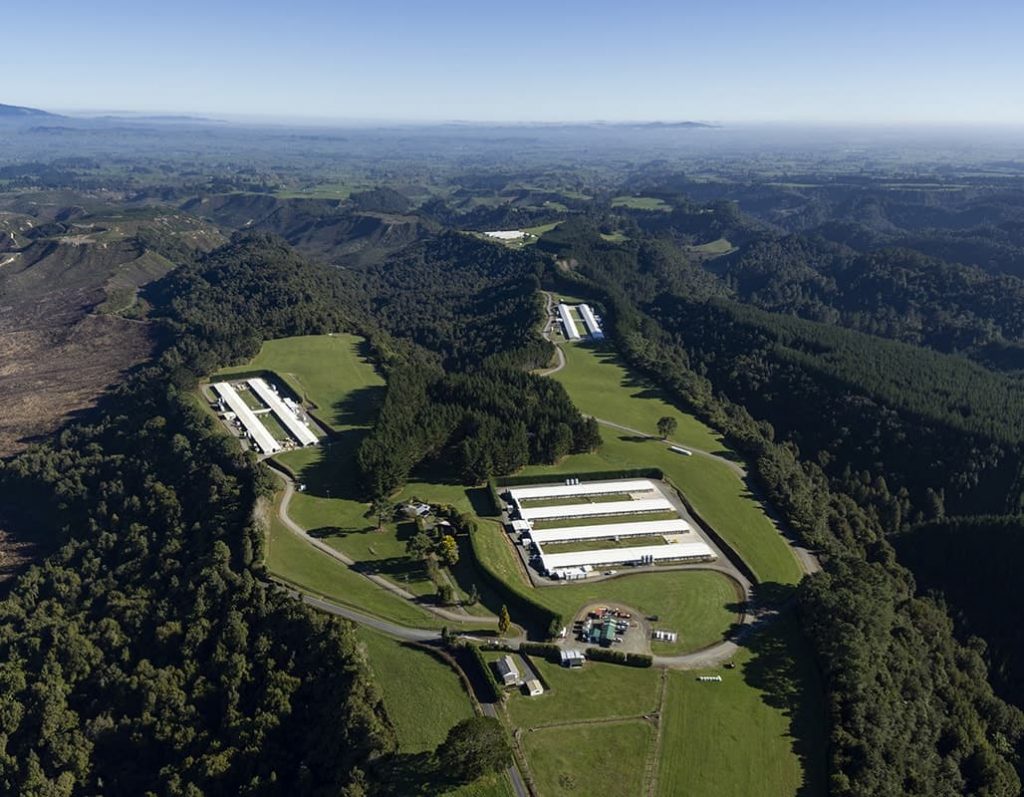NZHerald, June 2019

Six Waikato properties leased long-term to Inghams, Australasia’s biggest poultry products producer, form the asset base for a new managed investment scheme launched by Silverfin Capital Limited, a New Zealand syndicator and property manager.
The portfolio scheme comprises 932 investment units of $50,000 each with investors projected to receive an annual pre-tax cash return of 8.25 per cent to March 31, 2024 – paid via cash distributions on a monthly basis.
Silverfin has exclusively appointed Colliers International to market units in the scheme. Inghams’ facilities include four breeder farms, a hatchery and a processing plant having a combined land area of 186ha; and encompassing a significant area of vacant land that allows for future expansion.
All six properties are on 25-year, ‘triple net’, leases to Inghams Enterprises (NZ) Pty Limited (Inghams), which is a wholly owned subsidiary of Australian stock exchange listed company Inghams Group Limited (ASX:ING).
The combined net lettable area of the six properties is 90,600sq m and the current leases to Inghams have 20 years remaining, plus five rights of renewal of 10 years each.
Silverfin has contracted to purchase all six properties for $86 million.
The purchase and investment scheme establishment costs will be funded by investor subscriptions alongside a $43m bank loan from BNZ.
Charlie Oscroft, Colliers’ syndications director, who is marketing units in the scheme with colleague Kris Ongley, says it’s a chance for investors to capitalise on the huge popularity of the poultry industry.
Oscroft says Inghams Portfolio Scheme is intended to be a portfolio investment entity (PIE) subject to meeting eligibility requirements.
Silverfin has steadily become a leading player in the New Zealand property syndication and management market since it was founded in 2016; and has about $280m of commercial property assets under management.
The company will manage the Inghams Portfolio Scheme and its properties on behalf of investors.
The poultry processing plant at 594-668 Waihekau Rd, Waitoa, north of Matamata. Photo / Supplied
The poultry processing plant at 594-668 Waihekau Rd, Waitoa, north of Matamata. Photo / Supplied
Oscroft says six properties in the Inghams Portfolio Scheme are around or near Matamata and are strategically located to support Inghams’ fully integrated, poultry supply chain.
“Chicken is New Zealand’s most popular meat, accounting for 52 per cent of all the meat consumed in the country,” he says.
“New Zealanders eat about 37.5kg of chicken per person every year – that’s 20 chickens each, annually. To meet growing demand, the poultry industry has 180 farms around the country that employ 3500 people.”
Oscroft says the six properties in Inghams Portfolio Scheme play a key role in Inghams’ poultry supply chain in New Zealand and have very strong investment fundamentals, including long leases, superb tenant covenants and a strategic positioning in the geographic ‘Golden Triangle’ formed by the key cities of Auckland, Hamilton and Tauranga.
“Investors seldom get the chance to invest in properties of this calibre, let alone six properties at an affordable price point, but the Inghams Portfolio Scheme represents such an opportunity.”
Oscroft says all six properties are within a 60km radius of each other, which is a key feature of the portfolio. They are close to a large number of contract broiler farms as well as to Port Tauranga, which is their main source of feed.
The three Matamata breeder farms are at 111 Pohlen Rd, 207 Mowbray Rd and 25 Okauia Springs Rd. The fourth is at 903 Leslie Rd, Tapapa, east of Putaruru. They have a combined site area of 115.2ha.
The farms are the first step in Inghams’ Waikato supply chain network, producing eggs that are delivered to the hatchery.
The hatchery is located on an 8.4ha site at 2 and 16 Banks Rd, Matamata, which incubates eggs and hatches chicks for delivery to third party, contract, broiler farms. Mature chickens from the contract broiler farms are taken to a processing plant 28km north of Matamata at 594-668 Waihekau Rd, Waitoa.
The processing plant occupies a 62.6ha site within which 31.9ha of vacant land is used for irrigation and grazing.
Inghams is five years into the 25-year leases, paying $5,751,683 in annual rent. Final expiry, if the tenant exercises all five rights of renewal, is in July 2089, representing a total tenure of 75 years.
The leases have annual Consumer Price Index rent reviews through to 2037, with the next reviews due in July 2019 when the rent is expected to increase to $5,837,961 per annum.
Ongley says the leases are effectively ‘triple net’ leases, and all usual outgoings are recoverable from the tenant in addition to many capital costs.
“This greatly reduces the scheme’s exposure to capital costs and operating expenses,” he says.
Ongley says Inghams has been operating in New Zealand from its Waikato base since 1990.
“Parent company Inghams Group is the largest integrated poultry producer in Australasia, processing over 4 million birds per week.
“It has a workforce of 8000 and a strong network of processing and distribution facilities across Australia and New Zealand.”
He says New Zealand is considered one of the best places in the world to grow chickens due to the temperate climate, advanced industry systems and disease-free status.
The poultry industry has a government mandated code of welfare, bolstered by the Poultry Industry Association’s high standards of training and systems.
These factors have made New Zealand chicken in high demand around the world.
Over the last three decades, annual poultry consumption in New Zealand has more than doubled, from about 14kg per person in 1990 to about 37kg in 2018.
This represents compound annual growth of 3.4 per cent a year, slightly higher than worldwide growth of 3.1 per cent. By comparison, over the same period, New Zealand beef consumption declined by 2.5 per cent a year and worldwide consumption remained flat.
This strong growth in chicken consumption is due to continued population growth, greater affordability due to increased production efficiency, and consumer trends including health, wellbeing and convenience.
Ongley says chicken is one of the cheapest meats in New Zealand and contains less saturated fat than red meats such as beef, pork or lamb. In addition, New Zealand’s commitment to transition to a low-emissions economy – as demonstrated by the government’s proposed Zero Carbon Bill – is another likely factor for future growth.
Chicken has the lowest carbon footprint out of the commonly farmed and consumed meats, he says. Ongley says Silverfin considers that these strong industry fundamentals underpin the Inghams Portfolio Scheme.
